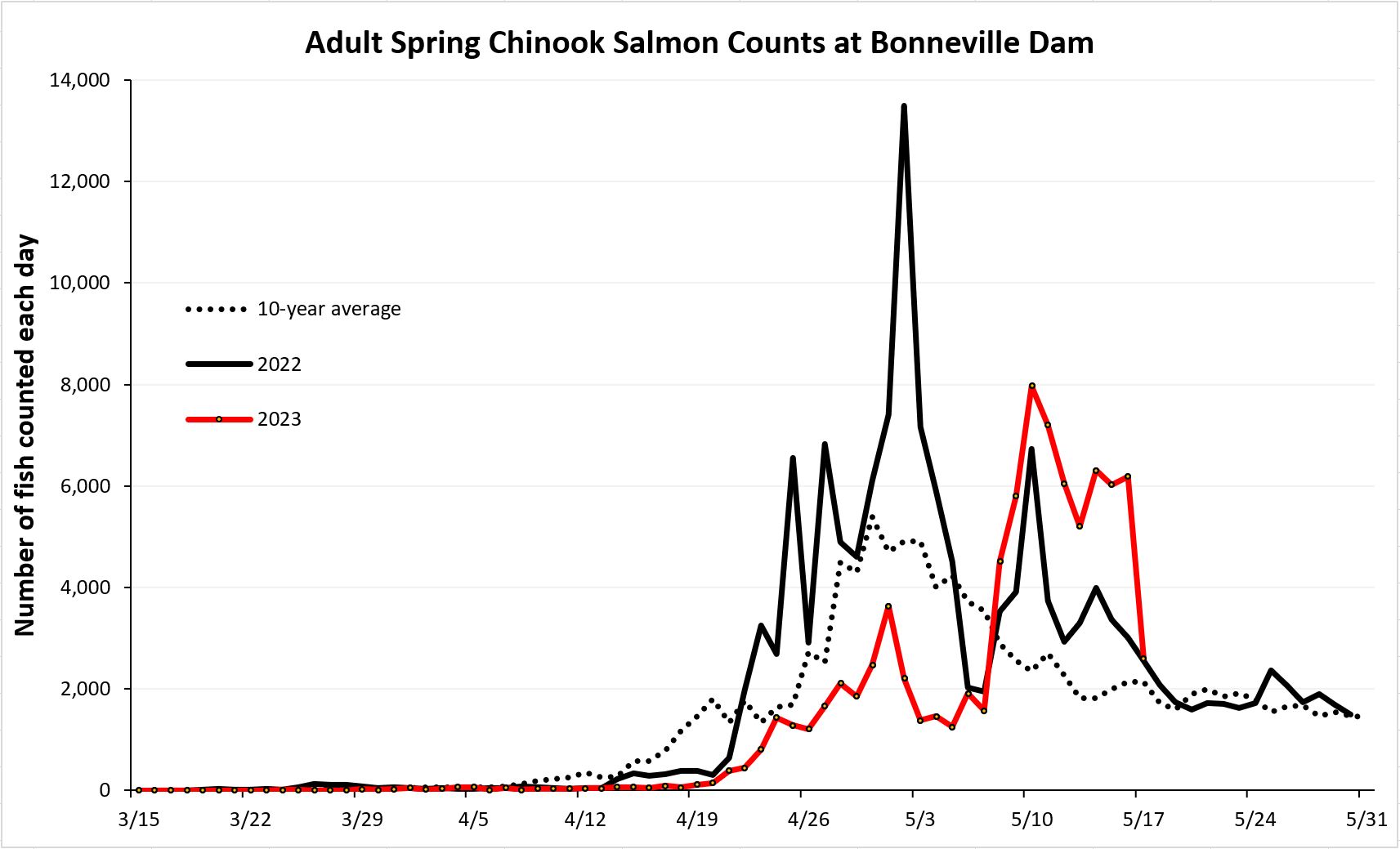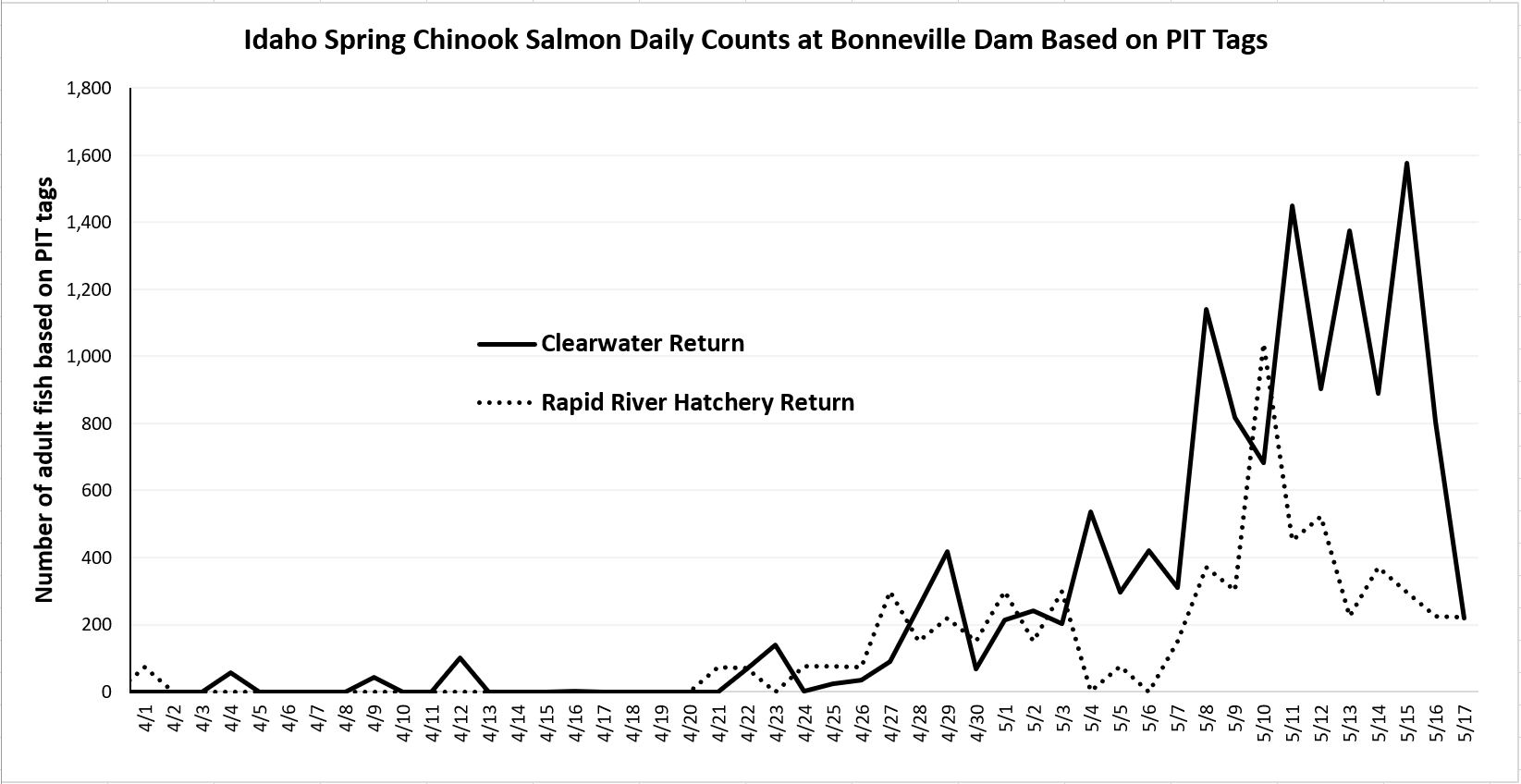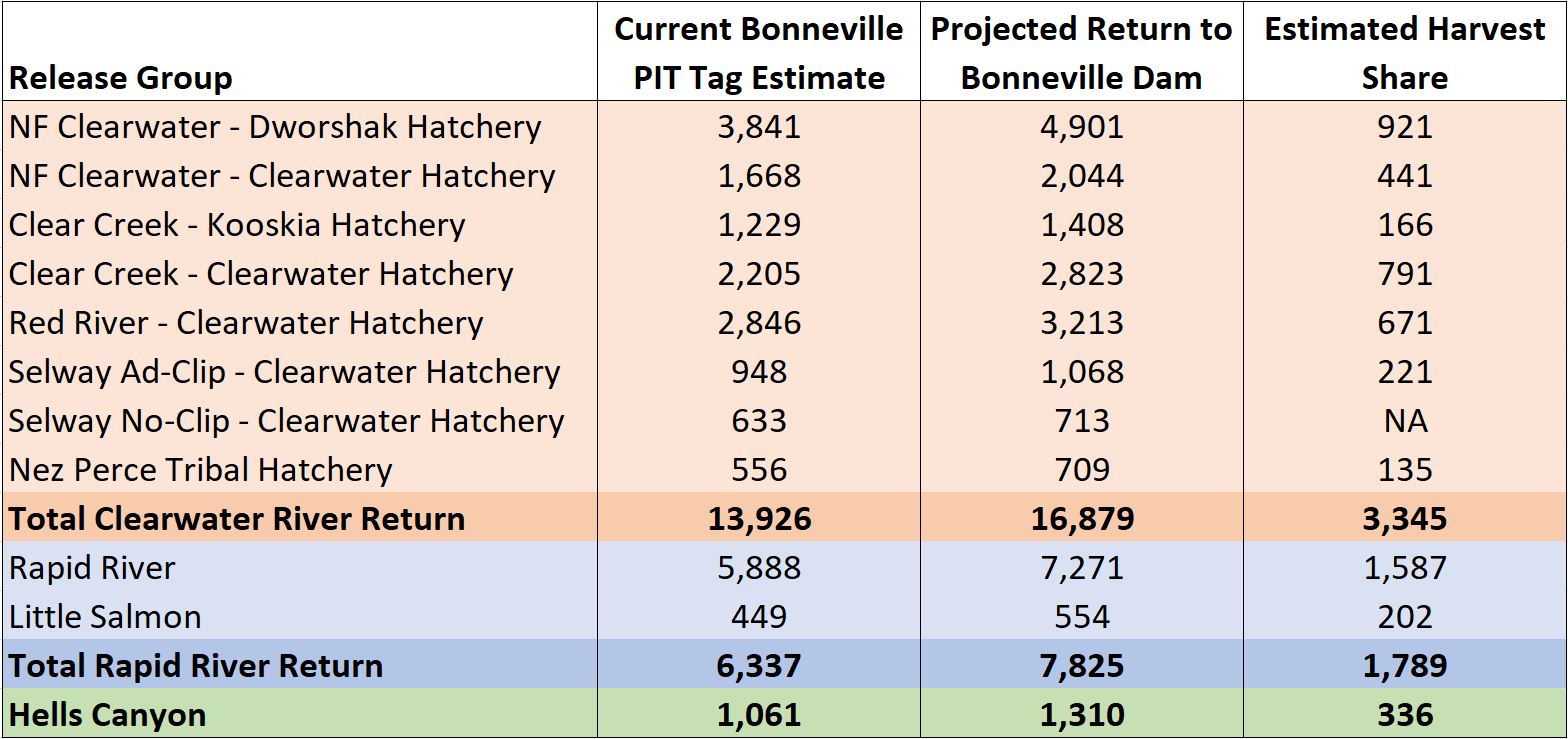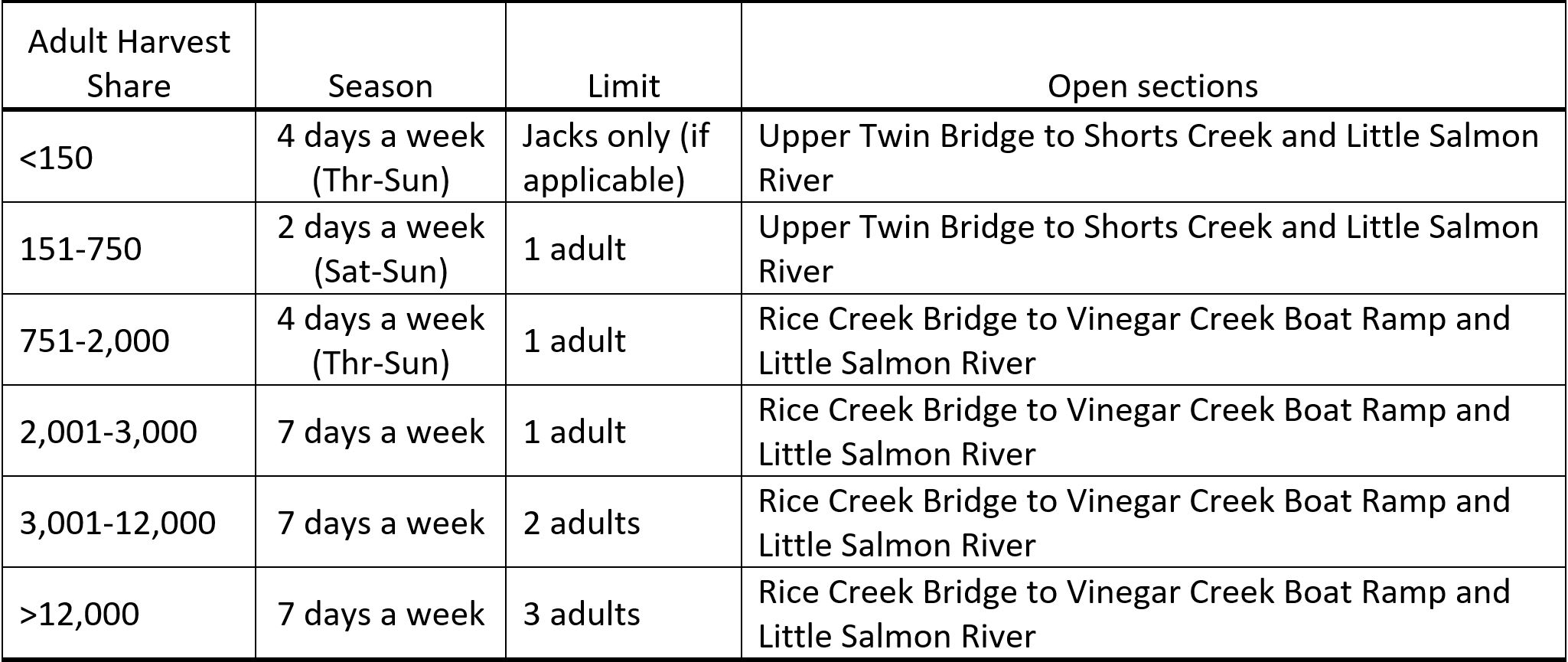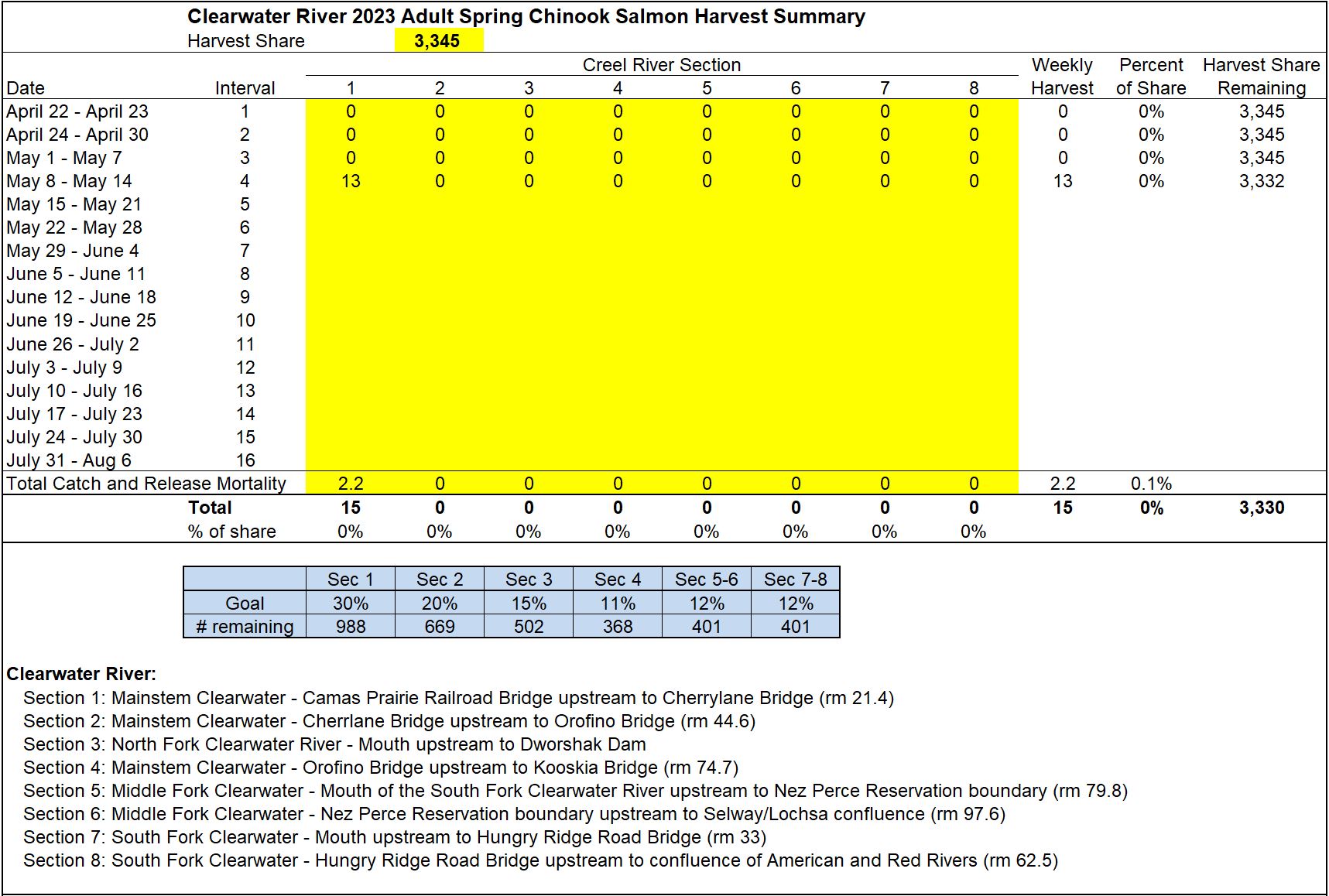Hi everybody.
The first thing I want to bring to your attention is that our commission met today and lowered the daily limit to 1 adult for the Rapid River run fishery (lower Salmon and Little Salmon rivers) which will take effect on Monday (May 22, 2023). For more details on the Chinook regulations, please visit our website (chinook seasons and rules). I will provide more details below on why the commission made the change they did.
Run Update
For the first time in nine days, Chinook counts at Bonneville Dam dropped below 4,500 fish (see figure below). It was nice to see counts stay up for this long as this certainly improved our harvest shares. However, don’t assume that the spring run over Bonneville is done. Yesterday, not only did adult Chinook Salmon counts drop but so did jacks, steelhead, and shad. Additionally, when looking at PIT tags, both spring Chinook and summer Chinooks counts dropped. This tells me something likely is going on at Bonneville that influenced fish passage. Discharge from Bonneville did pick up yesterday which might explain for this. Let’s hope that means we will get another surge over Bonneville of fish destined for our fisheries.


